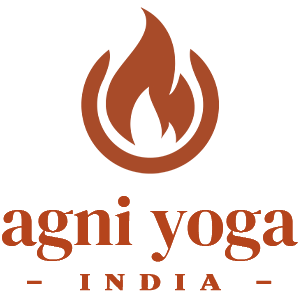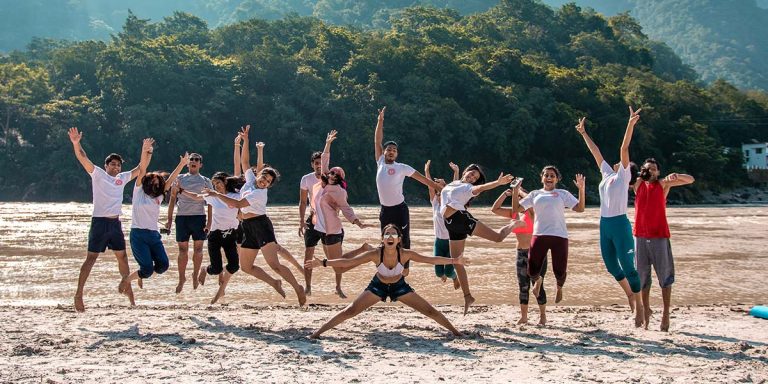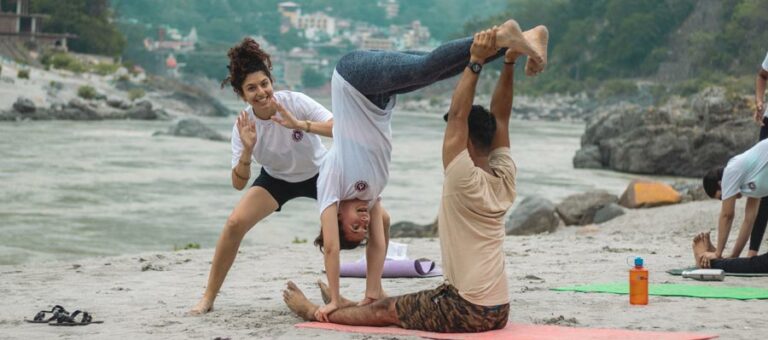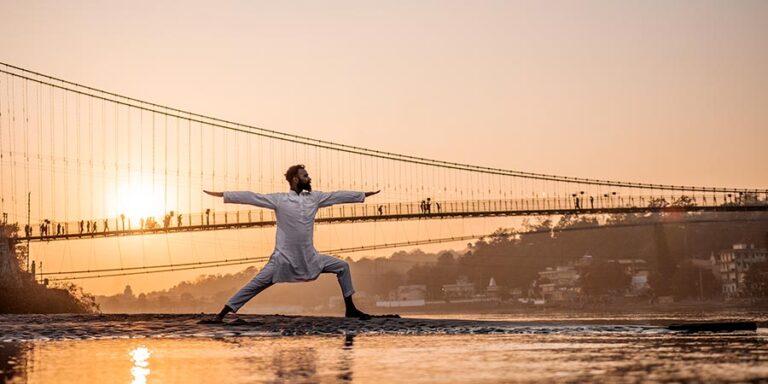Top 5 Sitting Yoga Poses And Yoga Tips For Everyday Benefits
Why Yoga?
At the mention of the word Yoga, people tend to make up a perception that, ‘Yoga is all about flexibility,’ or ‘Yoga’s purpose is to bend into positions one cannot.’ Often or not, people have similar sort of ideas about Yoga. With the recent changes around health due to COVID, people have started to look at Yoga as not just a physical practice but a mental practice too.
The change around the perception started somewhere on social media. People found solace and inspiration in celebrities who spoke about their experience in Yoga open-heartedly. In general, we have observed over the years that in the entertainment industry and in recent times, social media has the power to convince people and change perceptions. At home, people started googling, ‘yoga for relaxation, ‘yoga for beginners, ‘and yoga for immunity, and it gave a boost to the community of yoga practitioners around the world. Within no time, people with knowledge of Yoga started sharing their personal experiences and tips on how Yoga helps them to maintain a stable mind and physical body. From housewives to teenage boys began their journey in the realm of yoga.
The downside to such an outburst in this short period is that not all information we receive online is authentic or applicable to all. Yes, Yoga is for everybody, but one needs to understand what type of Yoga practices and its intensity, as it differs from body to body. On social media, we see an actor performing an asana, and immediately we desire to bend ourselves into that position just because it looks smooth and beautiful. What we forget here is that not every physical body is capable of performing every asana, especially as a beginner. Any practice of Yoga requires patience. It is never advisable to start practising meditation for 10 minutes a day when your back muscles are not strong enough to sit in one position for that long. To jump yourself into a headstand on your first day of practising asana, as you can break your neck too.
The point is any practice of yoga requires patience, understanding of one’s own body, consistency and conviction. If you wish to learn yoga for your physical health or mental health, go slow. Read and learn its origin, understand what your body truly needs, try and talk to your body and listen to it. Half of the time, we are sitting and complaining about our physical and mental shortcomings, but we forget that our bodies are smart enough to give us indications when something is wrong. We simply do not listen.
Hence it is vital to know why you are practising yoga. and what is your purpose with it? Acknowledging the need and desire will be the first step to gaining the benefits of Yoga in the long run.
What is a Yogic Lifestyle?
A yogic lifestyle in simple definition means following a routine in your day-to-day life which is minimal, sustainable and possesses the potential for mental and physical growth. There are myths which talk about how a yogi lives in the mountains and renounces all worldly affairs to follow the path of spirituality. Whilst a part of it may be true, a yogi is also a person who dedicates his/her time to day-to-day activity to grow and improve their physical and mental body.
In the 21st century, we do not and cannot expect people to renounce worldly affairs, but we can surely encourage people on following a path which improves their physical and mental health. As there are multiple definitions for ‘What is Yoga?’, it is sure to find the balance between the physical body and mental body, but yoga, according to Patanjali, is also a method to stop the fluctuations of the mind.
In following a path toward a yogic lifestyle, you are expected to not just work on your physical body but the mental body as well. The final stage amongst these practices of Yoga is known as Samadhi, which means the highest form of awakening where the mind and body is one. It is believed that yogis in the past had worked for years into the practice of meditation to reach the stage of samadhi. But if we keep today’s materialistic world in our minds we know that the path to samadhi is far-fetched, but that should not stop us from practising different methods in yogic scriptures to keep the balance of the mental and physical body.
Therefore, a yogic lifestyle is not when you practice meditation for 24 hours a day, but the efforts that you put into practising meditation for 10-minutes daily is when you know you have begun to follow the lifestyle of a yogi. To be able to restrain yourself from unwanted things and thoughts is the path of a yogi. Allowing yourself to feel all types of emotions, be it anger, sadness, frustration, irritation, laziness, and not reacting out of these emotions is the strength of the mind that one can achieve whilst following a yogic lifestyle.
5 Yoga asana poses to practice every day:
To begin with, warm up your body and ensconced yourself into a position and breathe deep. Allow your body to feel the heat within, which will help your body to open up before you get into the practice of daily asanas.
Below are five asanas to help you engage every body part and muscle. This sequence is simple yet challenging as it requires strength for holding yourself in one position that in return makes the next asana of counter easy. Whenever we focus on strengthening one part of the body, we need to make sure that body parts get a good amount of stretch by the end of the practice.
1. Paschimottanasana – Front body
An asana that focuses on hip mobility, strength in the thighs and a stretch for your hamstrings. The correct alignment in Pashchimottanasana is by engaging the front body, activating your quads (thigh muscles) and allowing your abdomen (stomach) to rest on the thighs whilst keeping your chest open with a straight spine.
This asana helps you to relax your nervous system. It brings down the level of anxiety, massages the uterus giving relief during period cramps, targets belly fat, stretches the hamstrings, and increases mobility in the hips.
2. Urdhva Mukha shvanasana – Back strengthening
In the sequence, after paschimottanasana, you can go into an upward dog position which is all about back strengthening and stretching the front body. It naturally becomes a counter asana for paschimottanasana. Here, from the shoulders down to your calf muscles, you hold yourself up against gravity and create a contraction on your back. This asana is considered beneficial for back strengthening, arm strengthening, opening up the chest, and good for spine health and front body stretch.
3. Chaturangadandasana – Full body strength
After holding yourself with full body engagement in an upward-facing dog you can level up the practice by going into chaturanga dandasana, which is a full body engagement pose.
There is a tremendous amount of strength expected in this position as the weight of your body is not just divided in your arms but to your core muscles, glutes muscles, quads, and calf muscles too. One of the great poses to practice is to gain full-body strength. It can be considered a variation of a plank, only a more difficult one. This position strengthens the arms, core and back.
Whilst, having your flow to practice daily, this asana provides strength and stability. Hold yourself in this pose for as long as possible and then move on to the next.
4. Garudasana – Balancing pose
Now that we have targeted different body parts for strength, it is time to make our body experience balance and stability. Garudasana is a balancing posture that helps with our body alignment, stability and strength.
This pose requires strength on both legs and core engagement. With one leg on top of another and arms twisted in front of you, you are required to squat down and hold the position for a couple of minutes before you decide to change the leg and repeat the same on the other side. This asana is not just helpful for balance, but it also increases the flexibility of the body, helps to open up the shoulders, and develops better concentration and focus.
5. Anand balasana (Happy Baby Pose) – Relaxation
Last but not the least, after following through with this sequence, end it with a relaxing posture that can help your nervous system to calm down and cool the body with a good stretch in your hamstring and back.
A happy baby is a pose generally practised at the beginning of asanas or the end as it is considered a relaxing posture for the body. Makes us feel happy and baby-like. The pose is beneficial for massaging the back, relieving stress and gaining flexibility in your inner thighs (hamstrings).
At the end of these five asanas, a one-minute Shavasana (corpse pose) is recommended, as any practice begins with an intention of honouring the body that ends with the same intention, by focusing on your third eye whilst laying down in the corpse pose, taking deep abdominal breaths. This allows you to cool down not just your physical body but your mental body as well.
How Pranayama is helpful?
Pranayama as we know is a practice more powerful than any asana in Yoga. Breath is considered a source of energy in our bodies. With food, we need oxygen to keep our heart pumping which sends not just signals to the brain on how to function but it energises the whole nervous system.
When your anxiety is at its peak, people recommend you take deep breaths. Ever wondered why? It is because oxygen charges our nervous system. When our anxiety is at its peak, our body produces more stress hormone which is acidic. This acidic hormone makes our brain foggy enough to not send the signal to the heart to breathe properly. Notice when you are stressed, your breathing will naturally become faster which is an indication that you are making your body more acidic. To bring it down to neutral, abdominal breathing is recommended.
Now, Pranayama is an expansion of this energy and life- a force that resides within us. Breath has the power to make not just our physical body strong but also make our mental bodies strong. After every asana practice, choose your method of breath work and practice 10 minutes of Pranayama daily for better retention of your asana practice. Like meditation, pranayama has various techniques, and they should be practised under guidance, to begin with.
To-do list:
With yoga poses to practice every day, remember to inculcate a lifestyle which is dominated by constant work on the mental body as well. In today’s busy world, we have enough reasons to get stressed but forget that this stress is also the cause of multiple diseases that you might have, be it physical or mental.
Following the path of a yogic lifestyle requires only one thing, and that is, ‘consistency’. Make yourself disciplined enough to work on yourself and your lifestyle. Everybody around us desires to have the best physical health. Be the one who not just focuses on physical health but mental and emotional health too. Challenge your mind and put yourself in an uncomfortable situation just to see how your mind helps you to figure your way out.
The To-do list includes only one thing, which is to dive into an activity of any kind with maximum mental awareness and physical readiness. The yogic path requires you to keep the balance of the mind, body and soul. If you keep consistency then you will have a chance to redeem yourself in any situation or at any point in your life.
Related Posts:
- Yoga Poses for Weight Loss: The Top 10 Advantages
- Yoga for Diabetes. How Stress Causes Diabetes.
- 5 Yoga Poses that give you relief from back pain
- 10 Benefits of daily yoga practice
- Why choose yoga as a career?
- Yoga Teacher Training vs Yoga Retreat. What should you choose?
- Methods to boost Endurance during Aerobic and Anaerobic Exercises.
- Yoga Teacher Training in Rishikesh India
- Why Join Agni Yoga India for Yoga Teacher Training in Rishikesh India?
- 500 Hour Yoga TTC in Rishikesh
- How to Dress Correctly for a Great Yoga Session? A Beginners Yoga Outfit Guide
- 15 Standing Yoga Poses That Will Build Full-Body Strength & Balance
- What is Ashtanga Yoga and Its Primary Series, Intermediate Series and Advanced Series?
- What is philosophy?
- What is Pranayama and Its Benefits? Types and Techniques for Beginners
- Yoga Retreat in Rishikesh
- Yoga Teacher Training Rishikesh India
- 7 Best tips to start Meditation
- How Yoga can help to lose weight? 5 Best yoga asana to do every day at home
- 5 Reasons Why You Should Learn Yoga in India
- 10 Reasons Why You Should Do Yoga Teachers Training in Rishikesh
- 5 things you need to know before doing Meditation by yourself. How guided Meditation is much more helpful.
- Yoga Poses Boosts The Immune System And Help You To Stay Healthy
- What Are Kriya’s And Kundalini? 6 Types Of Kriyas To Ultimate Purification
- Top 5 Sitting Yoga Poses And Yoga Tips For Everyday Benefits
Get in Touch:
Address: Agni Yoga India, Balak Nath Temple Street , Upper Tapovan, Rishikesh, Uttarakhand 249192
Email: agniyogaofficial@gmail.com
Phone: +91 7017 317171 , +91 7017 468303
Website: https://agniyogaindia.com/
Yoga Teacher Training in Rishikesh | Yoga School in Rishikesh | 200 Hour Yoga Teacher Training in Rishikesh




